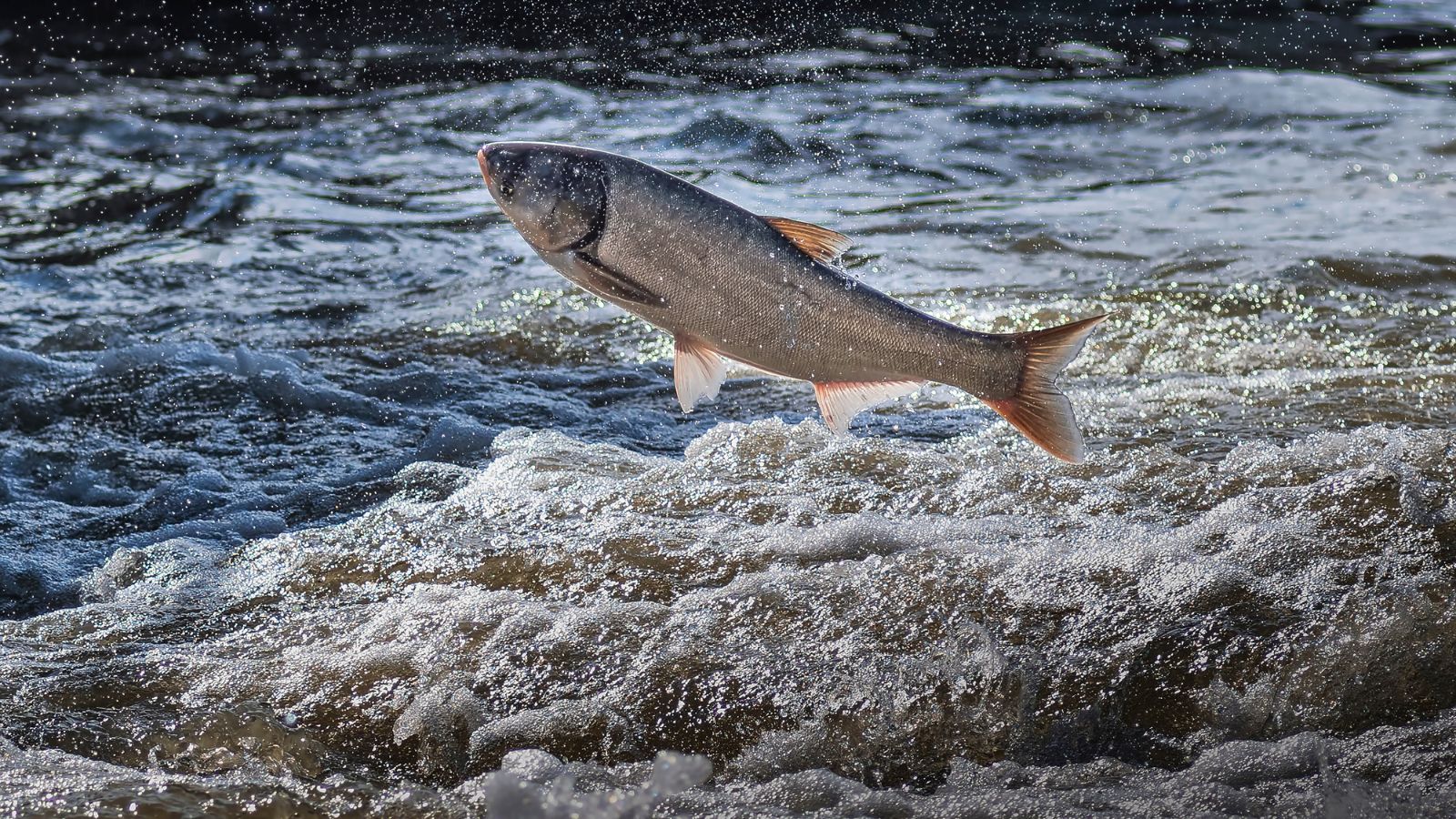These species, introduced voluntarily or involuntarily, have caused economic and ecological harm across North America. Species like the Burmese python are well known for their devastating impact on their environments, but others like the zebra mussels aren’t as recognized. Here are 17 invasive species that are overrunning North America.
Burmese Python

This python is native to Southeast Asia but has become an invasive species in recent decades in the Florida Everglades because of pet releases. The species preys on a wide range of native wildlife, including foxes, white-tailed deer, and opossums, and outcompetes native predators for food. Florida encourages the hunting of the species and pays qualified individuals to remove them.
European Starling

The European starling is an invasive bird species in North America and has become one of the continent’s most abundant birds. The U.S. Department of Agriculture notes, “The first recorded release of the birds was in 1890 in New York City’s Central Park.” The birds damage fruit crops and eat livestock feed.
Asian Long-Horned Beetle

The Asian long-horned beetle is native to China and Korea and was first found in America in New York in 1996. It is infamous for killing hardwood trees, destroying millions of acres, and causing billions of dollars in damage.
Water Hyacinth

The water hyacinth is native to South America and has spread worldwide. It was introduced in North America in the late 1800s as an ornamental plant and forms dense mats on water surfaces, drying out small lakes and outcompeting native species.
Asian Carp

Some carp species were intentionally introduced in the U.S. for algae control in aquaculture facilities, but accidental releases during high waters and floods saw them establish large populations across the country, notably in the Mississippi River. Treehugger notes four carp species “are considered invasive in the United States: grass, silver, bighead, and black carp.” Asian carp have an infamously high reproductive rate and voracious appetite, often outcompeting native fish for plankton.
Giant Hogweed

The giant hogweed is native to the western Caucasus region and was transported to Canada and the U.S. in the early 20th century for display in Victorian gardens. The plant is phototoxic and can cause severe skin inflammation. It is listed as a noxious weed in America, and careful eradication efforts involve root cutting and herbicide application.
Feral Hogs

Feral hogs can weigh up to 250 pounds and are distributed across 31 states, with an estimated population of 6 million. They cause significant environmental damage, spread disease, and prey on threatened native plants and animals.
Zebra Mussels

These mussels are native to Russia and Ukraine and were first detected in North America in the Great Lakes in 1988. The National Park Service notes they “were likely brought to the U.S. as stowaways in the ballast water of ships.” Zebra mussels outcompete native mussel species and can overwhelm water systems with their quick reproduction.
Spotted Lanternfly

The spotted lanternfly is indigenous to China and Vietnam and was first recorded in September 2014 in America. It has since become an invasive species across the Northeast, feeding on various native plants, harming crops, and damaging trees.
Nutria

This large semiaquatic rodent, identifiable by its large orange teeth, is native to South America. It was introduced to North America in the early 20th century for fur farming, which was unsuccessful, and the rodents escaped. The species’ destructive feeding habits erode wetlands and damage agricultural crops, and it is often mistaken for a muskrat when swimming.
Fire Ants

These ants are native to South America and have been an invasive pest in America since the 1930s. They are known for their aggressive behavior and painful stings, and billions of dollars are spent annually on medical treatment and control in infested areas.
Quagga Mussels

Quagga mussels are close relatives of the zebra mussel and were first discovered in North America in the Great Lakes in 1989. They outcompete native species and clog water pipes, and there is currently no good way to kill them without killing other aquatic life.
Emerald Ash Borer

This green beetle is native to northeastern Asia and was first detected in the U.S. in Michigan in 2002. According to the National Invasive Species Information Center, the species accidentally arrived in imported cargo, and ash trees infested by the beetle “lose most of their canopy within 2 years of infestation and die within 3–4 years.” The species is responsible for the destruction of tens of millions of ash trees across America.
Eurasian Collared-Dove

This dove, distinguished by its black collar, is native to Asia and Europe and was first noted in Florida in the 1980s. The species is more competitive than native mourning doves, aggressively competing for food.
Lionfish

NOAA Fisheries argues, “Lionfish have become the poster child for invasive species issues in the western North Atlantic region.” The species, which is indigenous to the Indo-Pacific, is infamous for preying on native fish and invertebrates, reducing biodiversity and fish populations.
Purple Loosestrife

The purple loosestrife, known for its purple flowers, is native to Asia and Europe and has spread across America. Its dense growth displaces native wetland plants like cattails, reducing biodiversity in rivers and canals.
Kudzu

Kudzu, or Japanese arrowroot, is infamous for smothering native plants and trees under a blanket of leaves, blocking their access to sunlight, and killing them. The Nature Conservancy notes that it was brought to America in 1876 as an ornamental plant and spread from the 1930s to the 1950s for soil erosion control. The species can grow a foot a day, killing native plants and decreasing biodiversity.
Read More: 17 of the Most Dangerous Cities in the World (6 Are in The US)

Every city has its dangers, but it goes without saying that some places are far more dangerous than others. We’ve compiled a list of 17 of the most dangerous cities in the world in terms of violent crime and homicide rates.
17 of the Most Dangerous Cities in the World (6 Are in The US)
17 Non-Negotiables Men of Integrity Refuse to Compromise On

A man with integrity has strong moral principles—there are just some things that he would never do. In this article, we’ll find out the top 17 things that damage a man’s integrity.
17 Non-Negotiables Men of Integrity Refuse to Compromise On
17 Things You Should Never Carry in Your Wallet

Let’s be real — when was the last time you went through your wallet and got rid of anything unnecessary? It’s important to know if you’re carrying items with you every day that could put you at risk. Click to discover the 17 things you should never keep in your wallet, helping you minimize the risk of identity theft, financial loss, and other issues.
17 Things You Should Never Carry in Your Wallet
18 Old School Habits That Are Making a Comeback

Old school habits are starting to make a comeback. These can be hobbies associated with the older generation, such as sewing or woodworking. It can also be old-school manners, such as writing thank-you notes and opening doors for people. Let’s look at 18 of these habits.
18 Old School Habits That Are Making a Comeback
18 American Phrases That Non-Americans Struggle to Understand

American expressions are a vital part of its culture, reflecting the nation’s history and values. However, these sayings can sometimes puzzle people from other countries because they often carry context, colloquialisms, and historical references that can lose their intended meaning when crossing borders. Let’s look at 18 of such American sayings.
18 American Phrases That Non-Americans Struggle to Understand
